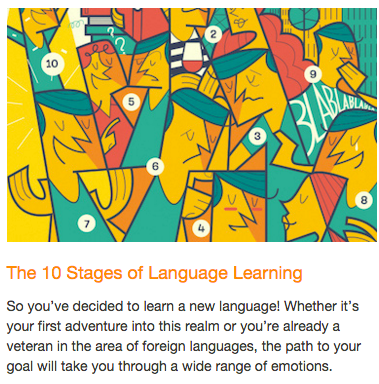Content Advertising is great to generate qualified traffic, website engagement and brand awareness. But many marketers manage to convert it in a highly profitable acquisition tactic.
But what is Content Advertising anyway? Content Advertising would be the combination of Content Marketing and (paid) Advertising. In other words it consists in creating content pages and paying for external ad placements to promote it and generate traffic back to your website.
These ad placements are typically “sponsored” placements or “Native Advertising” placements, which mean they visually integrate well with the look and feel of the page, and theoretically show content that related to the main theme of the page.
Right, but how paying for traffic on a content or editorial page could even be profitable ?
- First of all, this type of native ad format is highly effective. An ad that doesn’t look like an ad (native ads) catches much more the attention of the user than a traditional banner. Ad blockers eventually don’t even hide some of these ads.
- Telling a appealing story to your target audience rather than pushing a direct marketing promotion enable to multiply the click rates of the ads by 2x to 10x in some cases. It enables lowers CPCs.
- The supply of native ads impressions is (still) higher than the demand, meaning price should be more competitive than traditional IAB ads. Every media site has 6 to 12 native ad spots on each page. That’s hundreds of billions of ad impressions available.
- The media buying model is usually on a Cost per Click basis, so advertisers already make sure to get a certain level of performance.
So, with much higher engagement and click rates than traditional advertising, it is possible to pay competitive Cost per Clicks while generating high volume too.
Converting these visitors into profitable customers or prospects is usually THE most tricky part, and definitely the most important. This is were the Content Strategy part takes place. Content strategy must be the first thing an advertiser thinks about. Where most energy and intelligence should be used.
Here are a few guidelines to create content that converts :
- The content about your product or service must be clear, informative, transparent, and straight forward in order to grab the attention of the reader and attract the right audience.
- The content themes must be closely related to the final purpose or the action you want the users to achieve. When clicking on the headline of the ads, visitors must be already in a pre-action mindset.
- Content engagement is a necessary first step. Action is also key. That’s why specific calls to action must be placed throughout the page. The page layout and design must be well executed too.
Let’s get some exemples.
Babbel, the online language learning service (one of our client too) has been doing such a great job in Content Marketing that I will take this exemple.
- Content 1 : “The 10 Stages of Learning a Language” — Great content theme, in line with the final purpose (learning a language). Be sure visitors will be pre-qualified before landing on the website

- Content 2 : “9 French Words we should be using in English”. While the content is entertaining, definitely helps SEO and create engagement with existing users, it will never be an efficient theme for acquisition purposes. Just too far from the final purpose of learning a language.

Summary
As a summary, an appealing content promoted on native ads placements on the web, mobile or even email newsletters will generate amazing CTR% that will let you buy qualified traffic cheaper.
So, if the whole content advertising funnel (headline > content page > call to action > action page) is perfectly executed, native advertising might become your number 1 channel in terms of ROI and volume !
Interested in Content Advertising ? visit Powerspace.com and check out our amazing technology to deliver content in email newsletters.



